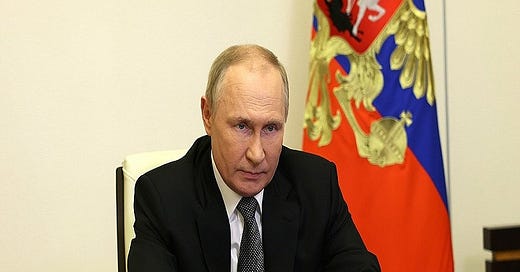Ahead of what’s shaping up to be the most decisive battle of the conflict thus far, Russia isn’t taking any chances.
President Putin just introduced martial law in Russia’s newly reunified Novorossiyan region along with ordering a “mid-level” response in the other ones bordering Ukraine that’ll give officials special authorities to ensure security there. This is the right move at the right time after Army General Sergey Surovikin made it clear on Tuesday evening that the outcome of Kiev’s ongoing counteroffensive against the first-mentioned part of his newly restored world power will greatly determine the Ukrainian Conflict’s military-strategic dynamics.
Everything is proceeding according to the trajectory that was forecast in late September pertaining to “Scenarios For The Ukrainian Conflict After Novorossiya’s Reunification With Russia”. The NATO-backed but Ukrainian-fronted invasion force that’s been gathering all along the 1,000-kilometer Line of Control (LOC) appears to be preparing itself for a major offensive across the entire front. The worst-case scenario is that it replicates last month’s Kharkov Counteroffensive, which could prompt Russia to employ tactical nukes in self-defense as an absolute last resort to protect its territorial integrity.
Russia’s plan to preemptively avert that from happening has been to implement a more muscular policy with respect to the special operation, to which end General Surovikin was appointed as commander of the entire mission and swiftly moved to wage his country’s version of “shock and awe”. Kiev also blundered by building up its forces along the northern border with Belarus, which was a massive miscalculation aimed at dividing Russia’s forces between that front and the Novorossiyan one but which only ultimately ended up dividing its own.
This inadvertent development paired with Russia destroying 30% of that crumbling former Soviet Republic’s power stations to create serious problems for the NATO-backed but Ukrainian-fronted invasion force behind the LOC. Instead of influencing them to cancel their planned offensive across the entire front, they appear to still be willing to go through with it despite the almost certainly suicidal outcome for their side. Nevertheless, since Kiev is now more desperate than it’s ever been since the latest phase of the conflict started eight months ago, there’s a high risk that it’ll go all out.
This greatly increases the danger to those several million civilians residing in Novorossiya, hence why President Putin prudently introduced martial law in their newly reunified regions in order to improve their security. It also explains why some civilians are being relocated from Kherson, especially after General Surovikin warned on Tuesday evening that Kiev might attack the nearby Kakhovka dam in order to flood the area, which could be carried out as vengeance to impede the predictable Russian counteroffensive that would follow Kiev’s almost certainly doomed-to-fail ongoing one.
Since Kiev has already attacked neighboring Russian regions like Belgorod and Crimea that were part of this civilization-state prior to 2014 or joined early that year respectively, it makes sense for President Putin to introduce the special security regime there that he also authorized on Wednesday. This leader of the Global Revolutionary Movement (GRM) evidently intended for his proactive moves to be comprehensive, which is why two complementary decisions were made at the same time. Ahead of what’s shaping up to be the most decisive battle of the conflict thus far, Russia isn’t taking any chances.





While obviously necessary, President Putin needs to formally escalate the SMO to full-blown war, as the massive Ukrainian offensive is war....planned attacks on the dam and nuclear plant, use of 'petal' mines to murder/disable civilians in Donbass etc - are war-crimes..... there needs to be massive bombing to smash the offensive.... IMO.